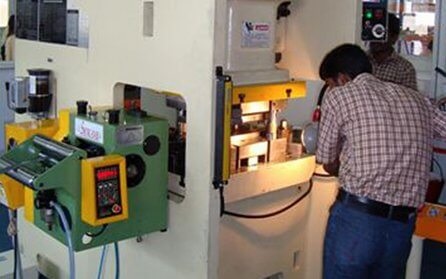Ever noticed those perfectly cut shapes in metal and wondered how they are made? It is not as simple as it seems! Sheet metal punch technology is a powerful process that shapes everything from car parts to electronics with incredible accuracy. A machine pushes a tool through metal, creating clean cuts in seconds. But what makes this process so precise? What techniques are used? And which materials can handle the pressure? Let us dive into the details and uncover the secrets behind this fast and efficient technique!
About Sheet Metal Punching
The sheet metal punching process helps cut holes and shapes in metal using a punch and a die. The metal sheet sits between them, and force is applied to create the shape. The cut-out piece can be removed as scrap, or the remaining sheet can be used. This method is precise and great for making uniform metal parts. The ability to create intricate designs without excessive material waste further enhances its efficiency.
Types of Punching Techniques
Metal punching uses different methods to cut shapes, patterns, and designs. The right method depends on the shape’s complexity, speed needed, and accuracy required. Below are some commonly used punching methods:
Types of sheet metal punches determine how different shapes and patterns are created in metal fabrication. Each method has specific applications, ensuring efficiency and precision in manufacturing.
-
Single Punching
Single punching technique involves using a single stroke of the punch to create a hole or cut-out in the material. It is ideal for simple shapes, small-scale production, or when high accuracy is needed in specific areas. This method is cost-effective for lower production volumes and provides clean cuts with minimal distortion.
-
Nibbling
The sheet metal punch technology uses nibbling to create complex shapes by making small, overlapping cuts instead of one big cut. This method is helpful for making curved edges or unique designs that a single punch cannot create. However, the overlapping punches can leave rough edges that may require additional finishing processes like grinding or polishing.
-
Perforating
This technique is used to punch multiple holes in a grid or specific pattern to create perforated sheets. Perforation is used for things like air panels, decorative screens, and filters. The holes can be made in different sizes, shapes, and spaces to fit different needs.
-
Embossing
Embossing does not cut through the metal like other punching methods. It creates a raised or indented design. This technique is used for branding, decoration, or adding grip. It improves the look and function of metal sheets while keeping them strong.
Each punching method has a special use and is chosen based on the project’s needs.
Materials Used in Sheet Metal Punching
Picking the right metal is important for sheet metal punching. Each metal has different qualities that affect how it works. Strength, flexibility, and durability decide how easy it is to punch and how good the final product is.
-
Aluminium
This metal is light, does not rust easily, and is simple to use. It is popular in aerospace, cars, and consumer products. Its softness makes punching easy, but it needs careful handling to keep its shape.
-
Steel
Mild steel and stainless steel are common in sheet metal stamping. It is strong and cheap, while stainless steel does not rust, making it good for boats and medical tools.
-
Copper
Copper is great for wires and electrical parts because it carries electricity well. It is soft, so it needs careful handling and proper tools to avoid damage during punching. Precision sheet metal punching ensures that copper components maintain their shape and functionality, reducing material waste and enhancing product quality.
Material Thickness and Suitability
The thickness of the metal sheet is important in punching
- Thin Metals: Thin metals are easier to punch quickly, making them great for fast production in large industries.
- Thick Metals: Heavier sheets require specialized machines with higher punching force to ensure clean, precise cuts without excessive wear on the tooling.
Final Words
Perfectly cut metal shapes don’t happen by chance! Sheet metal punch technology cuts metal quickly and accurately for many uses. The right method and material, like aluminium, steel, or copper, decide how strong and good the final product is. Clean cuts, detailed patterns, and smooth designs come from skilled work. Next time you see a shaped metal piece, think about the process behind it. Planning a custom project? Explore your options and make it happen!

